I’m sharing my Instant Pot® tips for beginners to get you started with your Electronic Pressure cooker easily and to help you lessen that intimidation and start making healthy, delicious meals for yourself and your family using these key Instant Pot® Basics!
Instant Pot® is the brand name of an electric pressure cooker, just like Crock Pot® is a brand name of a slow cooker. There are several different brands of EPC but I have an Instant Pot® so that is what I will talk about!
I have the Instant Pot® IP-DUO60 7-in-1 Multi-Functional Pressure Cooker. It is a 6-quart capacity pot. They also have an 8 quart capacity version of this as well.
The IP-LUX60 V3 is a newer model and there is also an IP-Smart Bluetooth-Enabled Model. All the tips I am sharing can be used across all the Instant Pot models.
Getting Started with Your Instant Pot® – Instant Pot 101
Let’s start with a little Instant Pot 101.
Are Pressure Cookers Safe?
I was a bit intimidated when I unboxed my new electronic pressure cooker from its package. I mean even the word pressure cooker has some underlying intimidation and threat of imminent danger. Pressure. Cooker. Yikes!
Pressure cookers are remarkably safe! They have several different fail-safe mechanisms and safety checks in place to make sure your kitchen doesn’t turn into a crater! The lid locks into place and the pot will not fuction for pressure cooking without.
You can read more about those safety features here.
Most of the fear about pressure cookies stems from the original stovetop top pressure cookers
What is an Electric Pressure Cooker (EPC) or Instant Pot?
An electronic pressure cooker is a kitchen device that has the ability to cook food faster than conventional cooking methods and it also saves energy. It is a closed system that does not allow steam to escape under certain pressures.
Instant Pot Pressure cookers are multifunctional. In addition to pressure cooking, you can use your Instant Pot as a yogurt maker, rice cooker, steamer, slow cooker,
How does an Instant Pot® work? How does it cook faster?
The trapped steam increases the pressure inside the cooker. As the pressure increases, the temperature at which water will boil increases. This resulting higher temperature is what cooks the food inside faster.
Are there a lot of parts to an Instant Pot®?
I’d say there are three main parts. The body (like the outside of your slow cooker), the inner pot (like the ceramic insert of your slow cooker), and the lid. That’s not too crazy, right?
The extra parts include a removal power cord (great for storage), an inner trivet, and the pressure release valve which is attached to the lid.
What the What with all those buttons!?
So while it may not have a lot of parts, the Instant Pot® does have a lot of buttons! Don’t worry though, to be completely honest, I use Saute Function & Manual almost every time!
The Instant Pot® is a smart cooker in that it uses a microprocessor to adjust for different foods. These buttons help the microprocessor figure out what you have inside the pot.
In addition to Saute and Manual the Instant Pot has a button (preset) for Soup, Meat/Stew, Bean/Chili, Poultry, Rice, Multigrain, Porridge (this one cracks me up!) and Steam.
Like I said though…I have used the manual setting 99.9% of the time!
(details of all the functions are listed in your Instant Pot®’s instruction manual)
Don’t Miss Out!
Get easy weeknight meals that can be made right in your instant pot directly to your email! Deals, desserts, and new tricks!
Instant Pot® Tips for Beginners
1. You do not have to thaw your food before you want to cook it in the Instant Pot.
Awesome right? Who has time (or remembers) to thaw anything? Not this girl! You can add any of your ingredients straight into your pressure cooker frozen! The only difference I have noticed this making is that it will add a bit of time to reach pressure in your pot as you are starting off at a cooler temperature.
That leads us to my next tip…
2. Cook times in most recipes are not complete times.
What do I mean by this? Well, I will tell you that I can cook frozen chicken breasts in 8 minutes. Which is true. I set my Instant Pot® to 8 minutes and it cooks my chicken perfectly, but that is not the total time it takes me to cook my chicken.
It takes additional time for Instant Pot® to reach pressure and release pressure. It is not until the pot reaches pressure (15 psi to be exact) that the timer begins to count down.
My rule of thumb is to add about 10 minutes to each recipe time for your total time. This may or may not include the time it takes to release the pressure.
3. Understanding the Instant Pot Timer.
This has been the most confusing part to people I talk to so I hope I can explain it well.
You will set your timer for your cook time. We will use 8 minutes again. I set my pot for manual 8 minutes. That time will not start ticking DOWN until the pot reaches 15 psi pressure. Once the pot reaches this pressure it will begin ticking down to ZERO.
When the timer reaches ZERO minutes, it will sound a series of beeps.
The Pot then will automatically begin counting UP. (This is what you can use as your clock for natural release–#6 below). It will also be prefaced with L before the numbers. So “L0:01”
4. You need at least 1 cup of liquid in the pot at all times.
This is the basis of the whole science friends! Pressure cookers need steam and you need liquid (water) + heat to get steam! If you don’t have enough liquid, you will not get the great results everyone is telling you about.
Broths, Stocks, Sauces…I have used them all. If you are using a thicker sauce, like a rich BBQ sauce, with lower moisture content I just add in an extra 1/2 cup of water on top of my sauce and it has worked perfectly every time.
Broths & Stocks are AMAZING at bringing in so much extra flavor! I almost always use this when my sauce will be a part of my dish!
5. You must ensure the float valve is in the “Sealing” position.
Before I get to the sealing position let me start by stating that the venting knob is very wobbly, it is actually a float valve. This is OK and NORMAL. Don’t freak out! This is what allows your pot to seal and vent (next tip!) It needs to be wobbly.
There are two venting knob settings. Sealing and Venting.
Sealing is essentially the closed position and allows your pot to build up steam pressure.
Venting is essentially the open position and allows the steam to escape your pot.
If you don’t have your knob turned to seal while you are trying to cook…your cooking time will never start counting down.
6. Understand the difference between Natural Pressure Release and Quick Release.
As the pot stops cooking and starts cooling, it naturally will release all that stored up pressure inside using the vent and pin on the top of the lid. This is called Natural Pressure Release. It varies on times of how long this can take depending on cooking times and the amount of food inside your pot.
Quick Release is when you manually (and CAREFULLY) flip the steam valve from “sealing” to “venting” before the pot has the ability to cool naturally on its own. This will release the steam manually.
When using quick-release it is VERY Important that you use a long-handled spoon or use a silicone oven mitt to ensure you will not be burnt by the steam release. It’s also a great idea to manually release steam away from your cabinets as well.
You will read recipes and see “cook on manual 8 minutes; 5 minute NPR” This means you will cook your food for 8 minutes and then you will let your food sit in the pot, as is, for 5 additional minutes while the pot “naturally releases pressure”, then you will manually release the pressure after that 5 minutes is up.
7. You can cook dry beans and grains without soaking or cooking them first.
This makes homemade soups a stinkin’ breeze my friends! No more canned black beans either! Make your own QUICKLY in your pressure cooker! Perfect for Mexican night or my Black Bean & Corn Salsa!
8. Always Rinse your dry legumes and grains before adding them to your pot.
While I just said above you don’t have to soak or cook grains, it’s a great idea to rinse your legumes and grains in a colander first in order to remove any nonfood particles as well as clean them as you never know what was added to them for packaging purposes!
9. Cooking Times are based on size not weight!
This is very important. People often think that times go up as weight goes up. That’s not really the case here. Time goes up as SIZE of the chunk you are cooking goes up.
For example, I have a 1 lb pork shoulder and a 3 lb pork shoulder. If I cut my 3 lb pork shoulder into roughly 1 lb chunks (same size value) I would cook all three of those 1 lb pieces the same amount of time that I would cook the single 1 lb roast.
Larger chunks = more cooking time.
You can find all the recommended Instant Pot® cooking times and charts here.
10. You can use your Instant Pot® as a ONE POT WONDER
Let me make your day. You can brown meat, add your veggies, add your sauce and cook it all in one pot. Yes, the Instant Pot® is truly magical. It has a Sauté feature that is AMAZING. I use it often to create an extra layer of flavor. I can brown most of my thawed meat in there creating a beautiful brown “crust” and then finish by cooking it to completion. It’s truly amazing and I recommend you take the time to saute if the recipe calls for it. You won’t be mad you did.
You can also use this Saute feature to thicken sauces after cooking. (That AFTER cooking is a very important thing!) The IP is incredibly healthful in that it cooks with steam so you can remove your meat and veggies and then add some flour, corn starch or arrowroot and thicken up sauces beautifully right in the same pot you cooked your food in, capturing all that great flavor left in the sauce and bottom of the pot!
The Saute feature basically gives the Instant pot the power of your stove or cooktop!
11. Respect the Fill Line.
There is a fill line on the inside of the cooking pot. Respect this. If you have your pot too full, most times it will never reach pressure and you will be a sad panda with uncooked food.
If it does reach pressure and you manually release the steam, you run a high risk of the liquid squirting out of the valve with the steam and it will be HOT and make a huge mess.
12. You can cook pot in pot. (PIP)
Great news, the pot in pot method means the Instant Pot can be used for canning. Furthermore, you can make bread and cook more than one thing at the same time and NOT have touching food! Does that make sense? For example, insert a small pan for rice and another that will hold your chicken and you can cook them TOGETHER. AT ONCE.
Here are my favorite pans to use for the PIP method. Anything that is oven safe is normally IP safe, including silicone molds and forms!
In fact, Iuse the PIP method for my Instant Pot Banana bread recipe as well as scrambled eggs!
13. The Sealing Ring can be removed.
At first, I seriously was like “DON’T TOUCH ANYTHING!” However, you can easily remove and replace the sealing ring in the lid of your pot if you need to clean it.
Also sometimes when you cook savory foods, they can leave the scent in the ring. People sometimes prefer to have a ring for savory and a ring for sweets. I haven’t had this problem yet but have seen it mentioned in some groups.
You can get replacement rings here.
14. You can use your Pressure Cooker as a Slow Cooker!
Yep! The IP has a “slow cook” feature that will let your pressure cooker act as a slow cooker. So clearly this is the magical unicorn of all kitchen appliances!
15. Don’t Do Dairy
Similar to a slow cooker, dairy does not fair well in an instant pot. The high heat can cause the dairy to scald, curdle or clump. If you are making a sauce or soup that requires dairy, add the diary AFTER the cooking process is complete and you have released pressure and opened the lid.
I hope I have answered the questions you had about Instant Pot®. I truly love mine and I can’t wait to share my easy recipes with you! If you have a question I didn’t touch in this post, leave me a comment below and I will try to help!
Next up in the series is Instant Pot Must-Haves (and must-don’ts!)
Happy Pressure Cooking!
CHECK OUT THESE GREAT INSTANT POT RECIPES!
- Instant Pot Mac-n-Cheese (4 minute cook time)
- The Best Instant Pot Chicken Ever (8 minute cook time using FROZEN Chicken)
- Instant Pot Pulled Pork
- Banana Bread – In an Instant Pot!
- Instant Pot Chicken Noodle Soup
- Instant Pot Veggie Beef Soup
- IP Hard Boiled Eggs A complete test of all cook times and methods!
- Instant Pot Vegetarian Chili
- Ultimate Collection of Instant Pot Soup Recipes
- Instant Pot Corn on the Cob
- Instant Pot Tuxedo Hot Chocolate
- 25+ Instant Pot Christmas Recipes
- Instant Pot Chicken Burrito Bowls
- IP Chicken Parmesan Soup
- 15+ Soups perfect for the Instant Pot
- Instant Pot White Chicken Chili
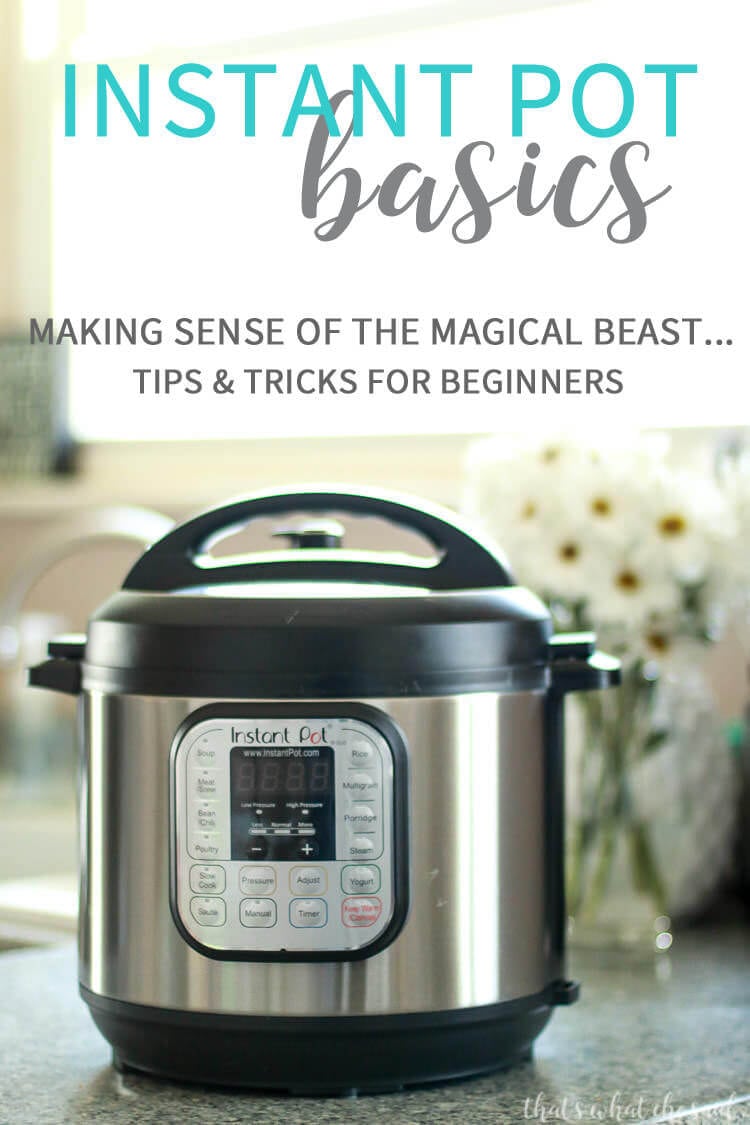
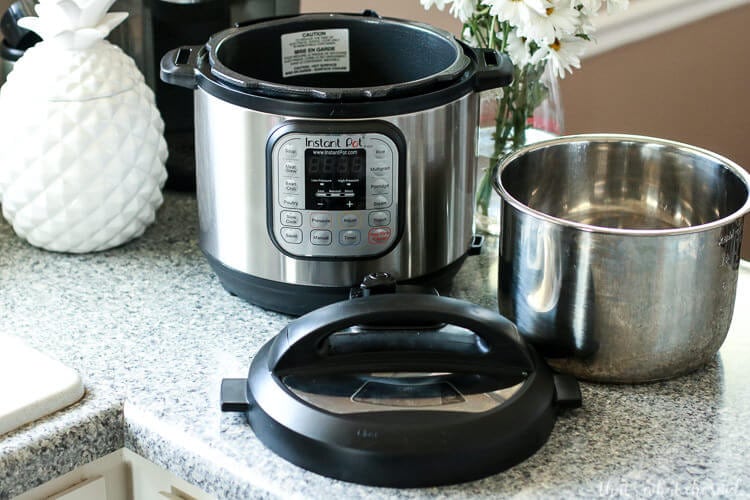
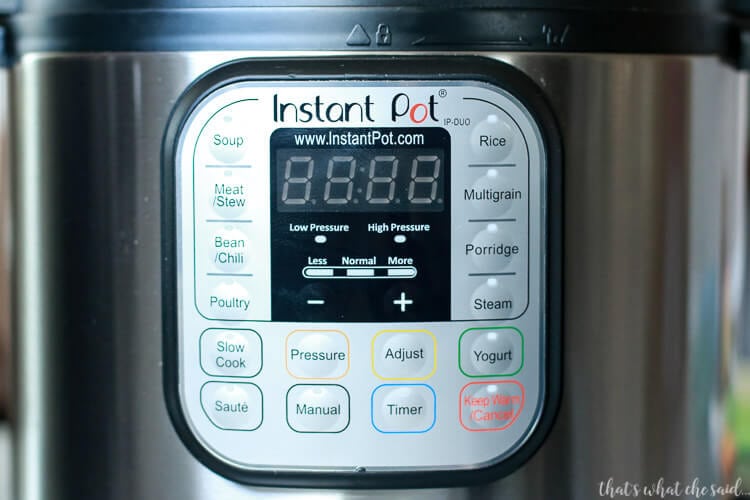
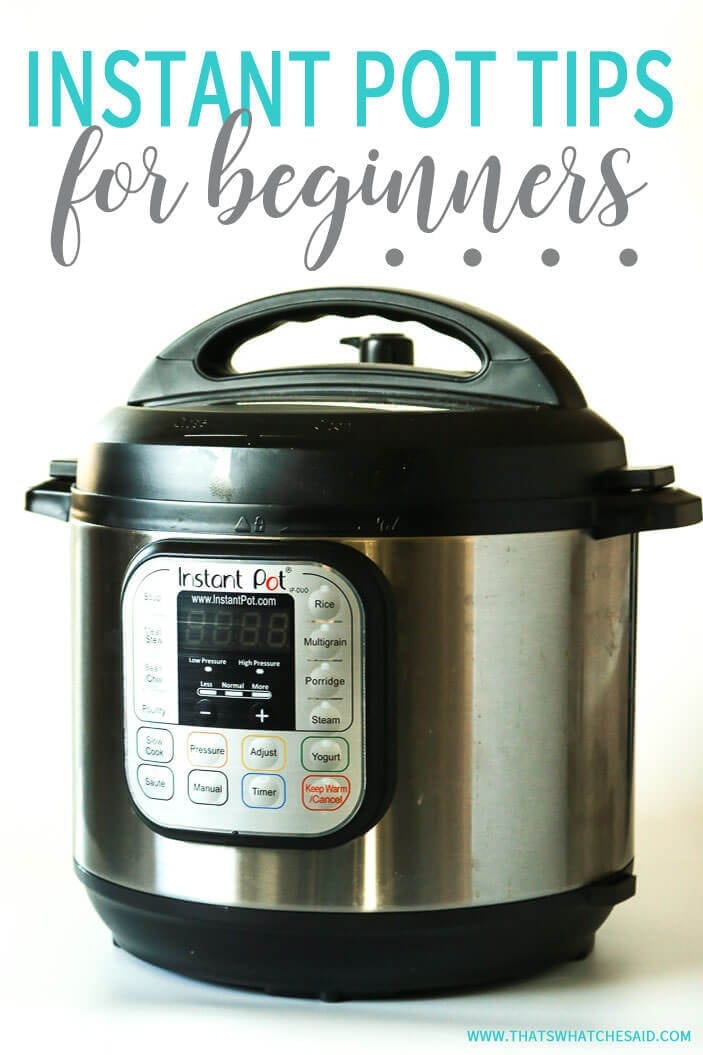
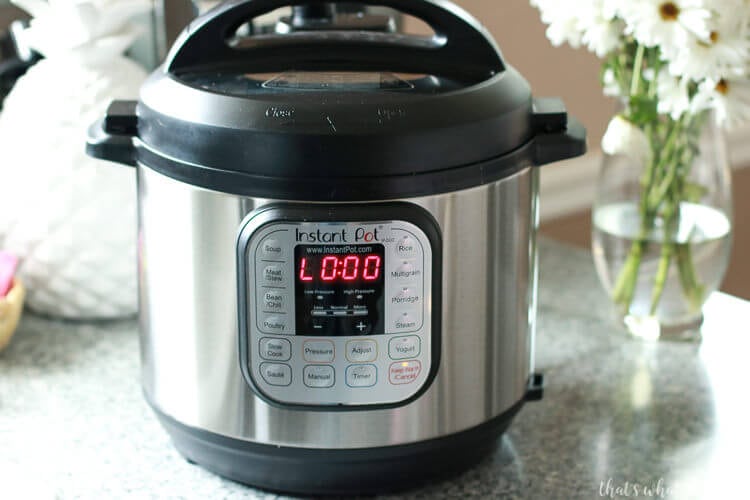
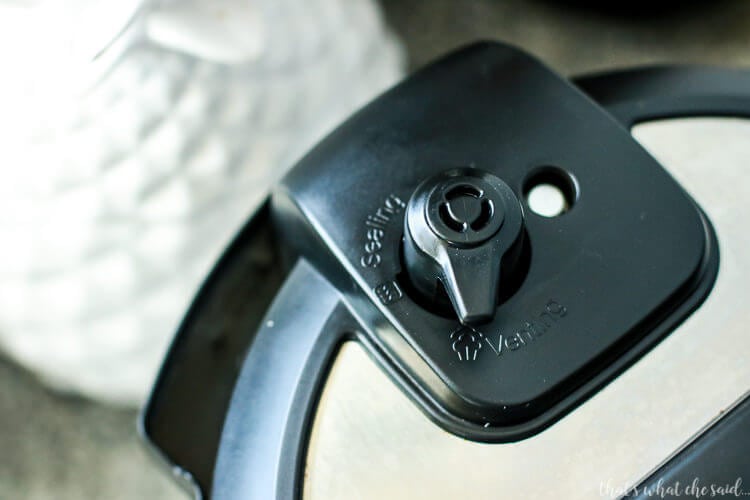

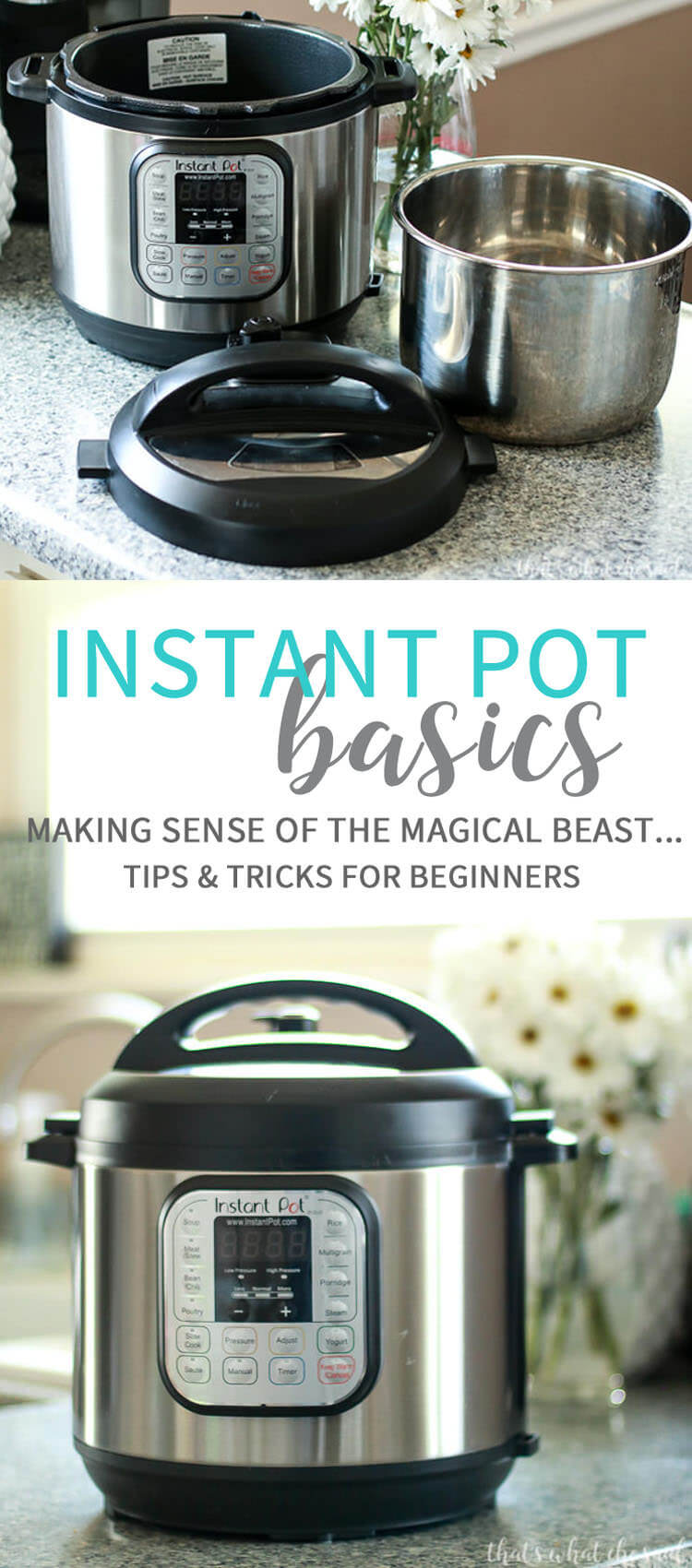









Comments & Reviews
Beth P says
This is the single most useful article about the basics of instant pot I have found! Thank you
Cheryl Spangenberg says
Beth, that makes me so happy to hear!
Sandy says
You have helped me out big time! I wasn’t confused at all. You explained direction very clearly and easy to understand. Thank you!
Cheryl Spangenberg says
I’m so happy to have helped, Sandy! I love hearing comments like this!